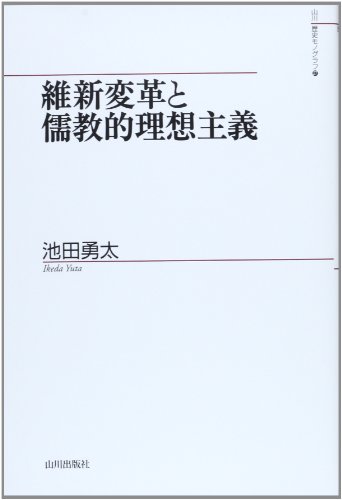1 0 0 0 日本及びアメリカ産ニホンナシ'二十世紀'の果実品質の比較
- 著者
- 植松 齊 佐藤 幹夫 久保井 榮 池田 勇治 新部 昭夫 大坪 孝之 舛水 康彦 URIU Kiyoto
- 出版者
- Japan Association of Food Preservation Scientists
- 雑誌
- 日本食品保蔵科学会誌 = Food preservation science (ISSN:13441213)
- 巻号頁・発行日
- vol.23, no.4, pp.185-192, 1997-07-31
- 参考文献数
- 19
- 被引用文献数
- 1 1
本研究は日本産及び米国カリフォルニア産のニホンナシ'二十世紀'について果実品質の比較をしたものである。果実のサンプルはカリフォルニアではフレズノ及びサクラメントより, 日本は鳥取及び長野より各々市場に流通している標準的な大きさの果実を材料とした。<BR>1. 生育期間中の気象条件について, 米国カリフォルニアの最高気温及び平均気温は日本より高かったが, カリフォルニアの最低気温は日本より低い値であった。日本の降雨量はカリフォルニアより高く, 月平均約100-150mmの値を示した。カリフォルニアは生育期間中にはほとんど降雨がみられなかった。日本の湿度はカリフォルニアより高く, 日照量についてみるとカリフォルニアは日本より高い値であった。<BR>2. 日本産とカリフォルニア産果実はほぼ標準的なサイズをサンプリングするよう努力した。日本の階級区分で, カリフォルニア産果実はL, 日本産果実は2Lクラスであった。これらのことから日本産果実は果実重, 縦径及び横径とも僅かにカリフォルニア産果実より高い値であった。D/L値 (果形指数) は日本の値が僅かに高く, 僅かに平たい果実であった。果皮色は日本及びカリフォルニアには差がみられたが, 各々の地域をみると一定の傾向はみられなかった。米国産果実の果肉硬度は日本産果実より著しく高く (フレスノ : 5.55, サクラメント : 4.98, 鳥取 : 2.21及び長野 : 3.00kg/cm<SUP>2</SUP>), で硬度が高くなると著しく搾汁率が低下する傾向がみられた。日本産果実の搾汁率は高い値を示したが, 硬度及び搾汁率に顕著な相関関係は認められなかった。<BR>3. 米国産果実のシュークロース濃度は日本産果実より著しく高い値を (フレスノ : 5.54, サクラメント : 6.42, 鳥取 : 3.05及び長野 : 2.649/m<I>l</I>) 示し, さらにソルビトールも高い値を示した。カリフォルニアの昼夜間の温度較差, 日照量, 降水量など気象条件がシュークロース及びソルビトール集積に影響したものと思われる。グルコース及びフラクトースには顕著な差は認められなかった。<BR>4. 日本産果実のクエン酸濃度は米国より高く, また逆にカリフォルニア産果実のリンゴ酸濃度は日本産果実より高い値を示した。しかし全酸濃度には差は認められなかった。
1 0 0 0 維新変革と儒教的理想主義
1 0 0 0 OA 幕末の飯田藩主 : 堀親義の隠居について
- 著者
- 池田 勇太
- 出版者
- 飯田市歴史研究所
- 雑誌
- 飯田市歴史研究所年報 (ISSN:13486721)
- 巻号頁・発行日
- vol.9, pp.111-122, 2011
1 0 0 0 明治初年における木下助之の百姓代改正論について
- 著者
- 池田 勇太
- 出版者
- 公益財団法人史学会
- 雑誌
- 史學雜誌 (ISSN:00182478)
- 巻号頁・発行日
- vol.118, no.6, pp.1144-1180, 2009-06-20
This article offers an hypothesis for analyzing the process by which the ideas held by civil affairs bureaucrat Kinoshita Sukeyuki (1825-1899) about local parliamentary government were formed during the early Meiji Period. In the reforms aimed at how to govern the new nation emerging during the Restoration era, Confucian ideas were employed in an attempt to make a transition to direct rule over the people via state power and authority. However, with the replacement of feudal domains (han 藩) with prefectures and the dismantling of the feudal ownership system, the old framework for civil governance collapsed, and an increase in personal freedom occurred within a mood of autonomy and liberty, to a degree beyond anyone's initial expectations. In light of such a new situation, there were those, including Confucian intellectuals, who called for the introduction of publicly elected local assemblies. It was Kinoshita Sukeyuki who offered a plan to reorganize the villages of Karatsu Domain after the transition to direct han civil governance, based on the edification of the common people and their employment in local affairs of governance. Kinoshita, who would later propose a village system incorporating a deliberative body, which he initially thought would exclude the lower classes from the electorate, was forced by widespread popular uprisings opposed to the Restoration government measures to propose that peasant representatives (hyakushodai 百姓代) be made assembly members and that the lower class villagers (komae 小前) be included, in order to eliminate the legitimacy of other rebel groups. He came to think that 1) prefectural and national assemblies should first be indirectly elected from city ward and village assemblies and 2) edification policy should be fitted to the level of social mores by raising public sentiment. In the background to this was the assumption of an unstable structure facilitating popular rebellion, due to the sudden disappearance of feudal ownership and the rapid expansion of individual freedom within the underdevelopment of a governance system to replace feudalism. For that reason it was necessary for early Meiji civil government to smooth relations between upper and lower classes, and Kinoshita thought the answer lay in publicly elected popular assemblies. In the face of such new conditions, Kinoshita himself went through a transition from a Confucian view of civil government paternally protecting the people to raising issues about how to empower a fully matured nation. This is the chaotic background on which issues about political participation by the people were formed during the early Meiji Period.

